Nowadays, customers combine in-store and online shopping.
A recent study suggests that 48% of respondents still prefer to buy items in person. And there are plenty of reasons for that: they can try things and have them immediately, skip delivery fees, and have the returns processed faster. Online shoppers, on the other hand, enjoy the benefit of shopping from the couch, cashless payments, and saving things on wishlists. If your business serves both parties, you should find a way to streamline the management of both channels, and POS ecommerce integration is a step to take.
For many retailers, the point of sale (POS) system becomes a solution to switch to omnichannel commerce, have reports from each channel in one place, build a hybrid business model, and offer their clients flexible payment methods. But these benefits are accessible to those, who properly set up POS and ecommerce integration. This article explains everything you should know before getting it done.
What Is Ecommerce POS?
A point-of-sale system (POS) combines software and hardware tools that allow for processing purchases via various channels.
With online shops, the POS is already a part of your shopping platform. Software registers the purchase, redirects to the payment page, processes your payment, and issues a receipt, order confirmation, and delivery details. It doesn’t need any hardware to work on the end-user side except for laptops or smartphones.
With a land-based POS system, it’s more complicated. It’s not just software that registers the purchase and enables card payments, but also all the hardware that scans the purchased items, sends the data to the payment systems, allows for card usage, and prints receipts. When you have both online and land-based shops, you might be thinking about in-store POS integration with ecommerce one for convenience and other perks we’ll discuss further.
The POS components include:
- POS terminal: central admin that controls the whole system and processes the input data
- Barcode scanner: a device for scanning goods and discount, membership, loyalty, or gift cards and sending the data to the terminal for further process
- Receipt printer: a machine that generates and prints a customer copy of the receipt (some POS systems can send e-receipts
- Credit card reader: a machine that processes customers’ credit or debit cards
- Scale: a device to weigh the goods and tell the business how much to charge for it
- Cash drawer: a storage for cash, checks, and vouchers
- POS software: programs that help each hardware device communicate via Bluetooth or WiFi
When we talk about ecommerce integration with POS, we mean the creation of a centralized POS ecosystem that makes possible the administration of land-based and online store from one platform. So, how exactly does this integration happen?
How Does Ecommerce POS Integration Work?
The main task of ecommerce POS integration is to create a centralized solution for online and offline retail processes and data sharing during purchases. It includes but is not limited to the following features:
- Catalog syncing between land-based and e-commerce stores
- Automatic inventory updates for walk-in and online sales
- Inventory data transfer across these two channels
- One-stop-shop solution for online and offline transactions with various payment methods
The scheme below explains how the integrated components work.
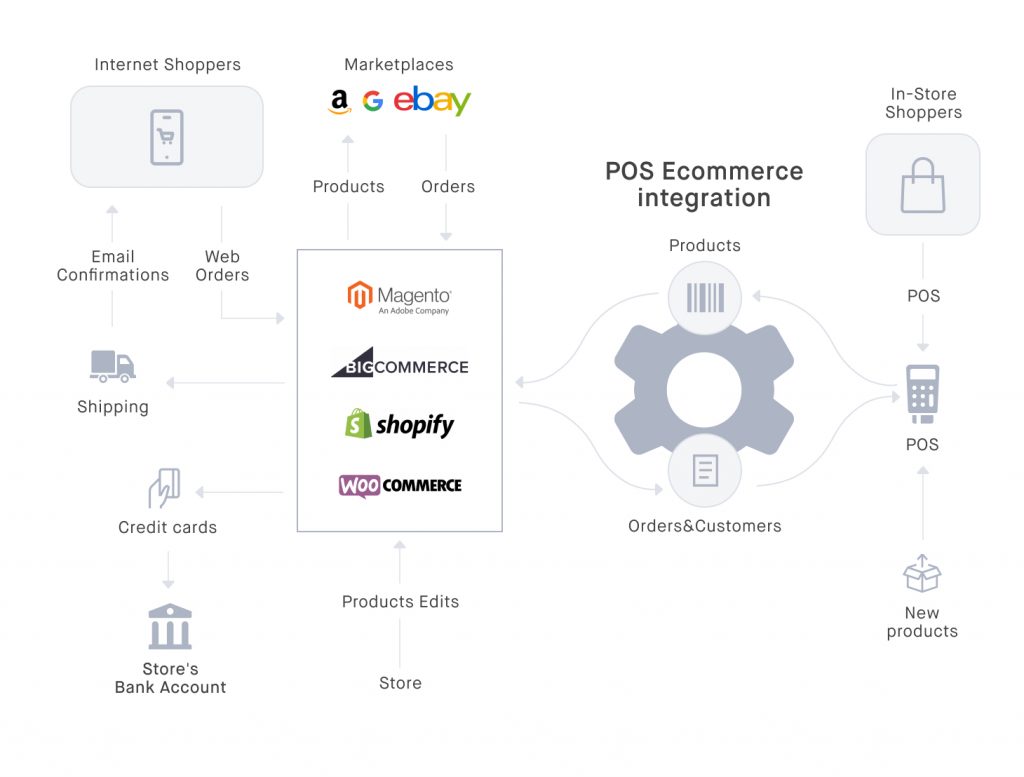
Now you understand what ecommerce and POS integration functions are. It’s time to ask an important question about why you should do this business move.
Why Do I Need an Ecommerce POS Integration?
Regardless of the business model your company follows, POS ecommerce integration will benefit each of them. Here’s how.
Manage more sales channels
Modern customers expect the shopping and delivery to be smooth and fast, and as the stats show, they’re ready to pay your business with loyalty and more purchases.
The retail businesses that switched to multichannel are forecasted to nearly double their sales from $351.23 billion in 2020 to $575.62 billion in 2023 in the US only. But as they add more channels, they need to manage each with a holistic business perspective in mind.
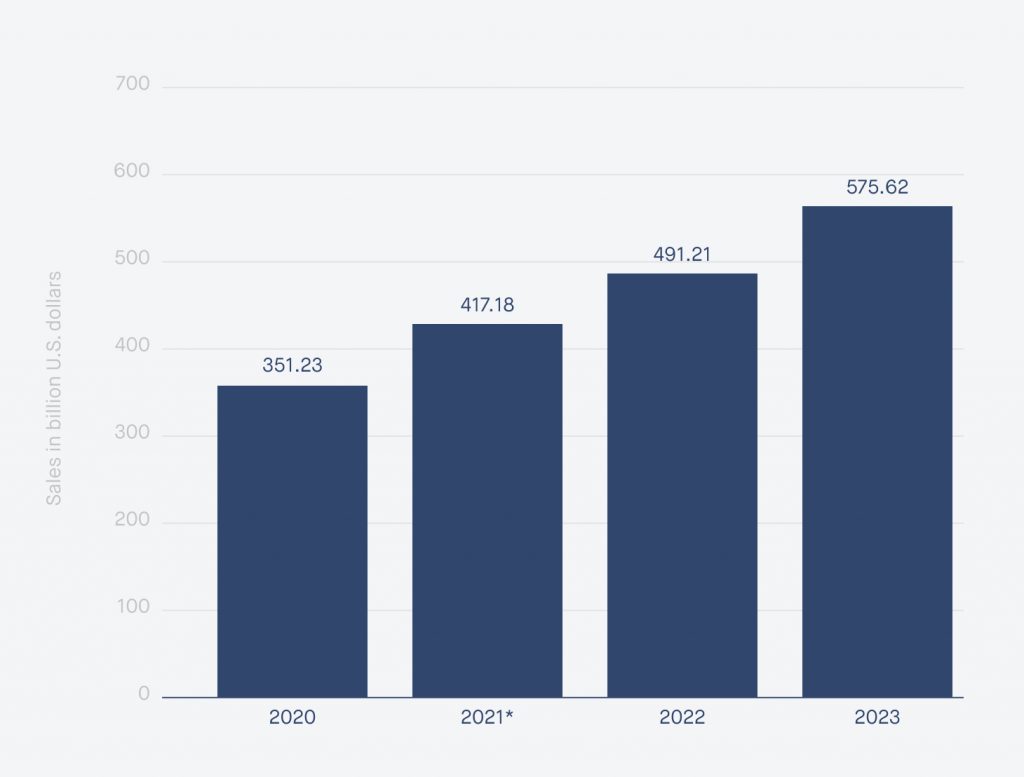
Retail POS ecommerce integration is a key to centralized management of each channel in particular and the business in general. As our case study with Wexon shows, one-platform multichannel management leads to improved customer satisfaction rates, diversifies sales channels, and streamlines B2B commerce online and offline. Both clients and managers see the orders placed in-person or online and generate reports to see how each channel performs to make informed decisions and strategic changes.
How to manage channels in Magento: You can create or edit sales channels in Magento via API or OMS Admin panel.
See Inventory in Real-Time
Knowing what’s going on with your inventory in online and land-based stores is critical for scheduling supplies, planning marketing campaigns, and making sure you can satisfy the customers’ demand. Modern POS can auto-update inventory numbers to avoid understocking or overstocking issues, and integrating it with your land-based system will give you 360-degree visibility into your stock. This is also your chance to stop frustrating your customers with “Sorry, we’re our of stock!” emails when they’ve already paid the purchase.
How to manage inventory in Magento: go to Stock and Sourcing to manage inventory-related processes and sourcing configurations.
Improve Accuracy and Eliminate Human Error
Routine work blurs the focus, which leads the way to mistakes, and when it comes to money, it’s the last thing your business needs. Counterfeit money, the wrong total, too much/too little change for the customer — the list of problems arising from stress during payment handling can go on and on.
When you have retail POS with ecommerce integration, the cash procedures become optimized, so the salespeople at your shop can focus more on the customers rather than the cash.
How to manage payment in Magento: go to Magento OMS Features and Process Guides > Payment
Get Detailed Reports
POS ecommerce integration also comes in handy when you want to improve your business analytics. Product, sales, or return data will give you valuable insights into what your customers like, what products aren’t popular, how much revenue they generate, and how many items you’ve sold over X days. Why do retailers need this information? To create better-selling strategies, meet the customers’ demands, and envision future development.
How to manage reports in Magento: Go to User Guide > Operation > Reports > choose the needed report configuration (sales, marketing, review, business intelligence, etc.)
Offer Cross-Channel Promotions
POS is a powerful tool to elevate your promotion, discount, and loyalty game cross-channel. It allows your clients to participate in your promo campaigns whether they shop online or in-store, and gains your business more sales and revenue. How can POS system ecommerce integration help with this?
- Manage standard product discounts
- Improve and personalize email marketing by creating a database of client’s profiles based on their recent purchases/wishlists
- Enable loyalty programs across various channels seamlessly (e.g. ConnectPOS has a built-in Reward Points System)
- Offer a buy-one-get-one (BOGO) system that allows customization of items and quantities needed to qualify for a particular promotion
- Use in-person and online purchase history to upsell and cross-sell based on the shopping patterns
Provide Additional Payment Options
The only right solution to make your customers happy during the purchase is to make your payment options acceptable, mobile, and safe — all at the same time. Here are a bit of stats to understand what people prefer:
- In 2020, 44.5% of online buyers used digital/mobile wallets to pay for services
- As of April 2022, there are 82.22 million Bitcoin wallet users and plenty of global companies accept crypto as payment
- 42% of the US customers won’t complete the purchase if not offered the preferred payment method
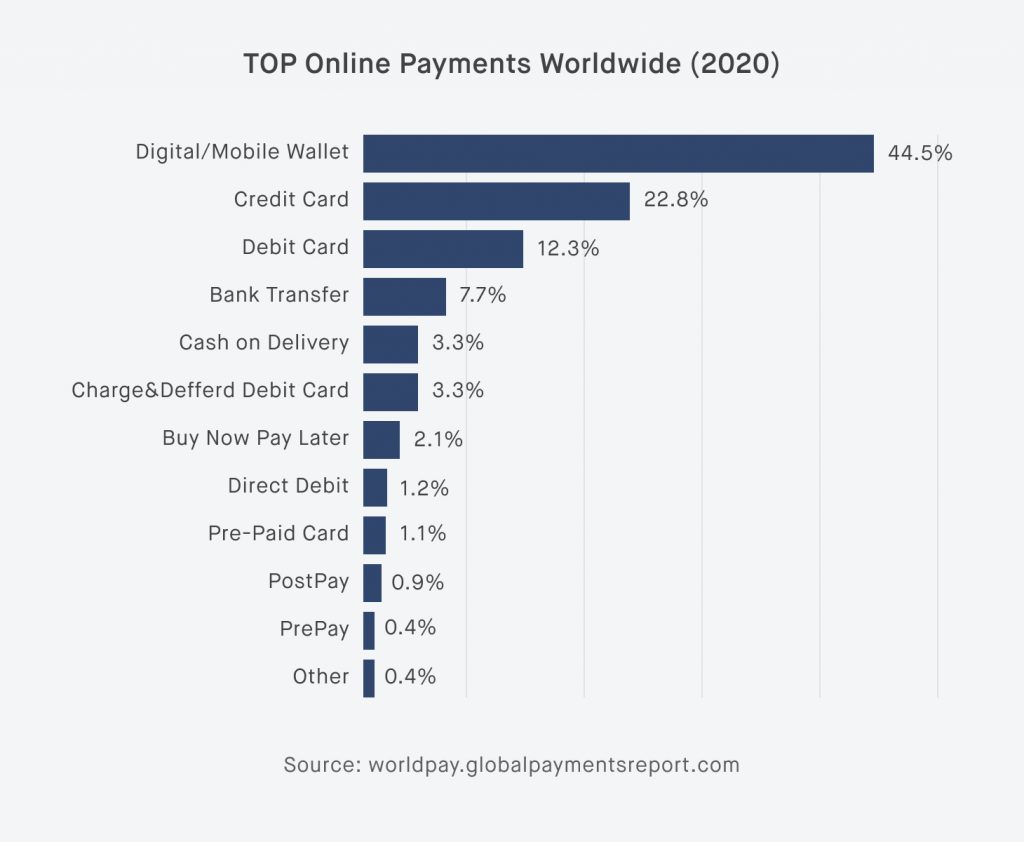
With proper POS ecommerce integration, you can integrate online and offline payments and offer your clients the most convenient and secure ways to pay for the services/products they buy from you.
How to configure payments in Magento: Go to User Guide > Sales > Payments to set up online and offline payments, and to User Guide > Operation > Currency to adjust accepted currencies and exchange rates.
These reasons look pretty worthy of POS system with ecommerce integration, right? At this point, you may wonder how much it will cost your business. Spoiler: there’s only one way to learn it.
How Much Can POS Ecommerce Integration Cost?
And by this one way, we mean considering all the factors that can influence the cost.
- The choice of technologies. Sometimes developers use pre-built open-source libraries and tools to just plug in and configure the solution. But more often than not, they will need to write codes themselves to come up with the custom solution. It will take different time frames to complete the mentioned tasks and will be reflected in the invoice.
- Tech partner. You may find a couple of Jack-of-all-trades freelancers at any marketplace, or ask the recruiting company to provide you with the needed people, or hire ecommerce developers to complete the integration. Regardless of who you hire, do test their skills, ask for testimonials, and read the contract terms carefully to know what you’ll pay for.
- Your existing tech landscape. Before the integration, the tech team will assess your current hard and software, and chances are, they will need to re-configure or update the areas of integration that will cost you extra money.
- Time frame. If you’re short on time, be ready to pay extra for urgency and more people on the team.
- Budget. Developers can offer you plenty of options but they all will be restrained by your budget. It’s better to let the tech team know how much you can spend on POS ecommerce integration well in advance, so they offer you solutions that would be the best fit for your business.
You know why you need to integrate your online store and POS and after researching what IT job market offers, you can calculate the approximate costs. The question is, where to start the integration process and what to know before hiring the team? We suggest choosing one of the below scenarios that reflects your business.
How to Integrate My POS and Ecommerce Site?
POS with ecommerce integration has three most common scenarios:
- You have your online store and POS running separately
- Your POS cannot be integrated with your ecommerce store
- You don’t have POS yet
Each case has its own peculiarities, so let’s discuss them in more detail.
Scenario #1: You Already Have a POS
You have a solid starting point if you already use a working POS that covers your business needs and fits your post-integration strategy. In this case, you need to evaluate your POS functions and features carefully and check if it allows API or extension-based integration. There’s a chance that after this check-up you might want your POS to shift focus on inventory management, customer management, easy returns and exchanges, or full customization. If you need to change anything about your existing POS, it would be the best time to do it with less downtime and inconvenience.
Scenario #2: You Have a POS That Can’t Be Integrated
Your POS might be too outdated, which is why it doesn’t allow integration with your store. Plus, your clients’ needs have probably changed a great deal since when you introduced POS to your store. In this case, you should evaluate which features are critical to your business now, which would help you streamline your marketing campaigns, and the ones your clients expect from the system. Afterwards, you’ll have two options: to modernize your existing system or switch to a new, preferably cloud-based POS.
Scenario #3: You Only Have a Cash Register
Having no POS in place brings many advantages as you don’t have to deal with legacy technology and can choose the one that covers your business needs. The world is your oyster! We’ve prepared the list of those that would ensure the best POS and ecommerce integration.
5 Best POS and Ecommerce Integration Systems
Business needs vary from one company to another, but there are a few factors that any business should consider when searching for POS: integration, ease of use, flexibility of payment processors, customization, and cost. Each of these categories has a winner among our chosen top five.
Square: Best for Budget Merchants
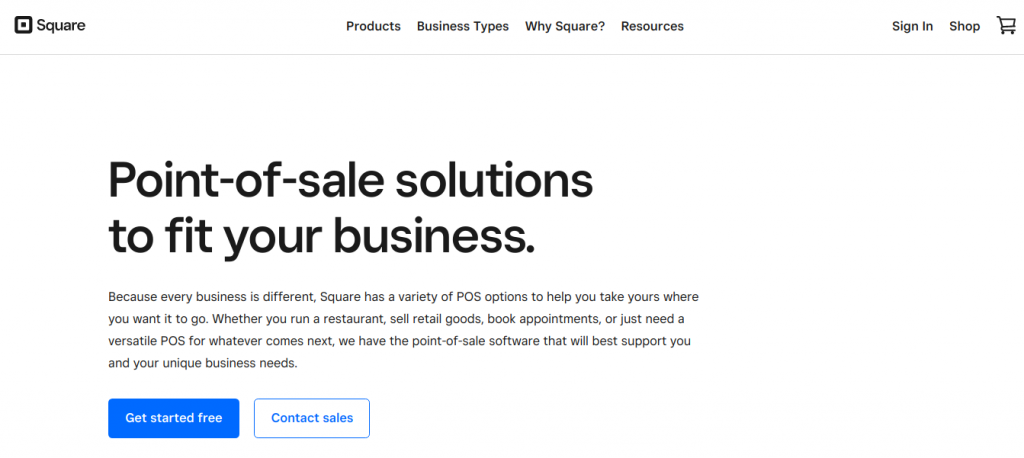
If are the owner of a small business in the restaurant, appointment, or retail industry, Square should be your go-to POS. This simple software offers APIs and SDKs for integration with third-party tools, which means you can customize the look and payment options as you like.
Square has various POS software for each business type, sets a low price for hardware (magstripe reader, scanners, and stands), and charges 2.6% + 10¢ for every in-person cashless transaction. Square also offers remote and custom-build payment options, so you can mix and match the types of payment that are most popular with your clients and pay a fixed fee for each transaction.
Lightspeed: Best for Fast Scaling
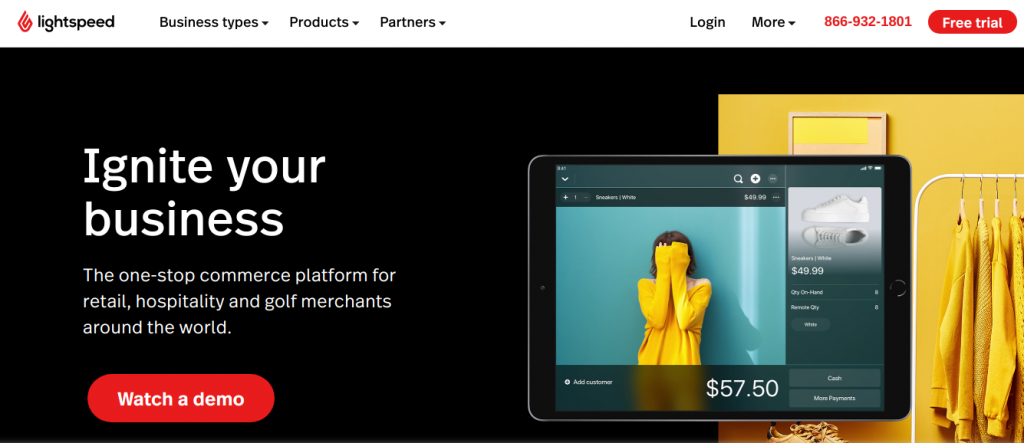
Lightspeed is an option for those, who start small while having their minds set on fast scaling. This all-in-one solution allows you to manage everything purchase-related from a single platform while offering plenty of features for inventory and marketing management.
Its 4-tier subscription plans (Lean, Standard, Advanced, Enterprise) and card-present (2.6% + 10¢) card-not-present 2.6% + 30¢) processing fees offer features that are commensurate with the company’s needs at each evolutional stage. Also, the company partners with SKU IQ to make POS ecommerce integration and inventory management smooth.
QuickBooks: Best for Custom Finance Management
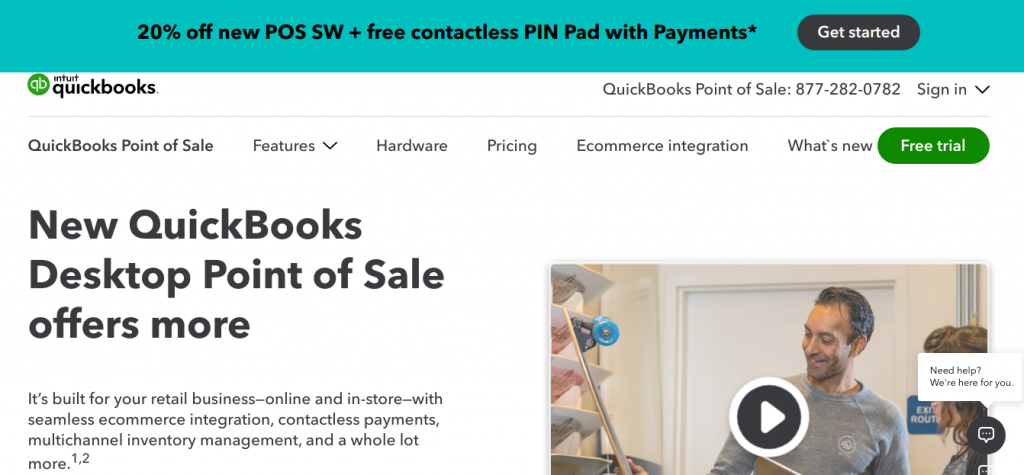
If you’re a small to medium business in C2C or C2B business with a weak spot in finance management, we recommend integrating QuickBooks with your e-commerce store. It’s one of few POSs with a one-month free trial, so the clients can check out the report, invoice, payroll, and tax generation options besides the usual payment processing features.
In QuickBooks POS, you can track inventory, sync sales data with QuickBooks, track UPC codes, manage prices and discounts across departments, and connect with a cash register. It offers three-tier one-time-purchase pricing plans (Basic, Pro, Multi-store) for software and offers hardware for extra fees.
Shopify POS: Best for Easy Multi-Channel Management
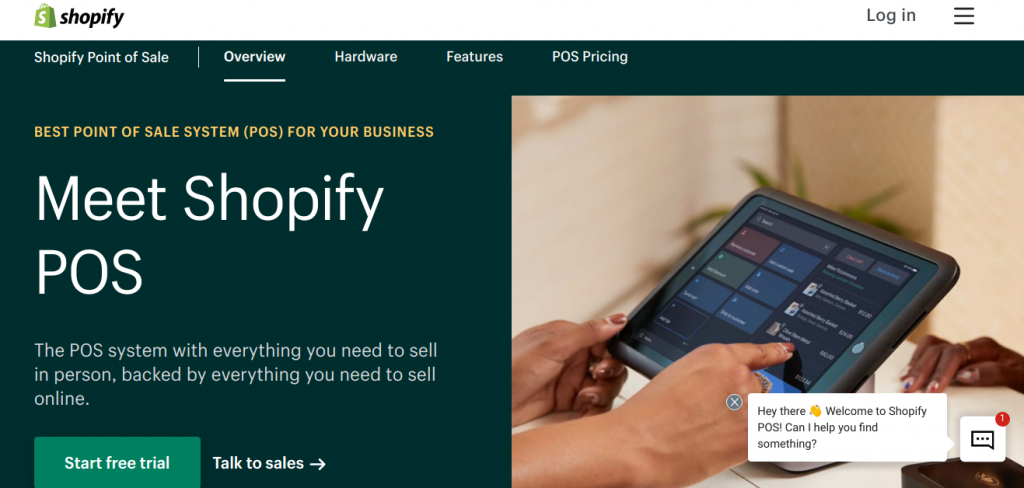
Shopify has one of the most user-friendly POS in the market that works great for omnichannel commerce. Contrary to its competitors, it charges for software (the fees start at $9/month) but offers a 2.7% processing rate for every transaction in person and from 2.9% + 30¢ per each online transaction depending on chosen plan. This somewhat high price compensates for POS’s ability to integrate with ease, create various marketing campaigns across various channels, use 24/7 support, get daily reports, add staffers with role-based access and permission, and more.
Vend: Best for Enterprise-level Inventory Management
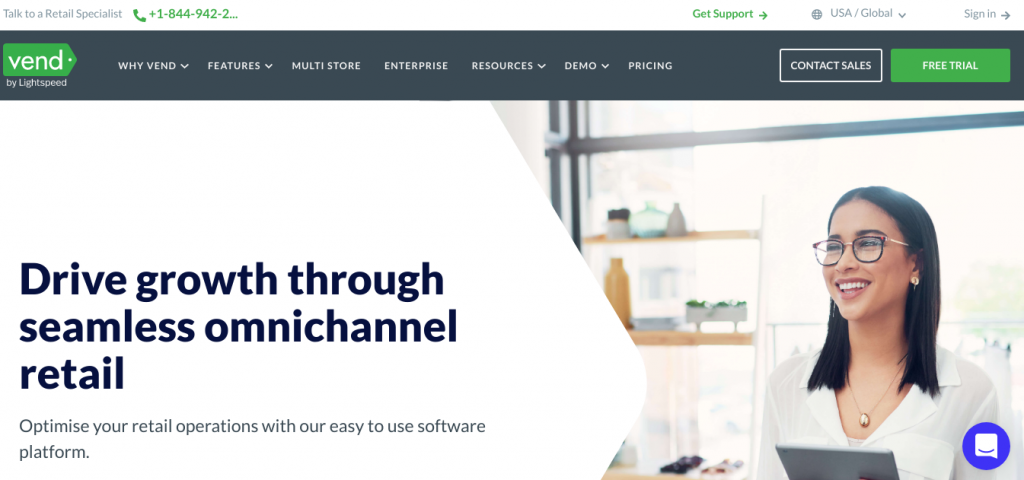
Medium-to-large companies should consider Vend as their option because of its cloud-based nature. The software allows companies to sell products, take orders from customers, integrate hardware devices, accept payments, and sync data across multiple locations and inventory registers. It can manage heavy volumes of data, which makes it a perfect solution for multi-store and chain businesses.
Vend comes in a three-tier pricing plan (Lite, Pro, Enterprise) with a monthly fee, separate hardware cost, and a 14-day free trial of any plan.
Wrap-Up
POS ecommerce integration allows management of the multichannel businesses from one secure platform, which streamlines payment processing, improves customers’ shopping experience, and allows for more personalized marketing. Elogic’s experienced team of developers will help you unlock these and many other benefits of integration and suggest the best way to smoothly bring together your sales channels.
Drop us a line if you need a reliable tech partner to start managing your business like a pro!
Integrate POS now

